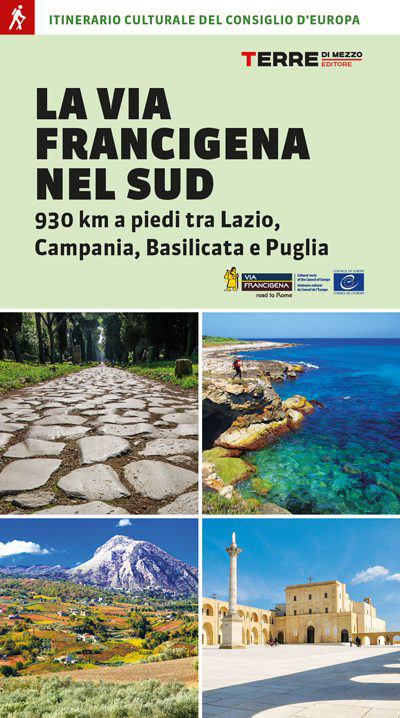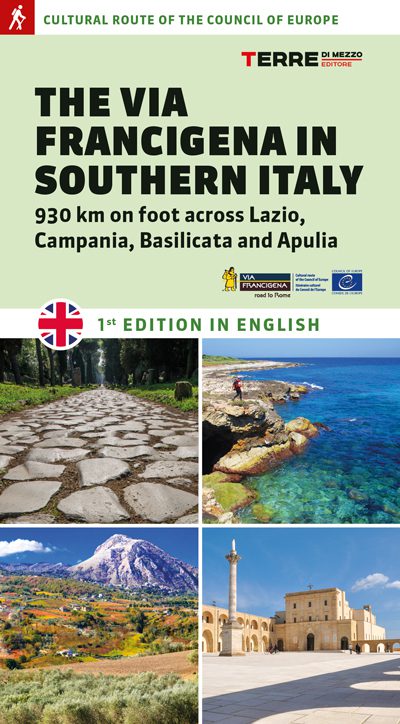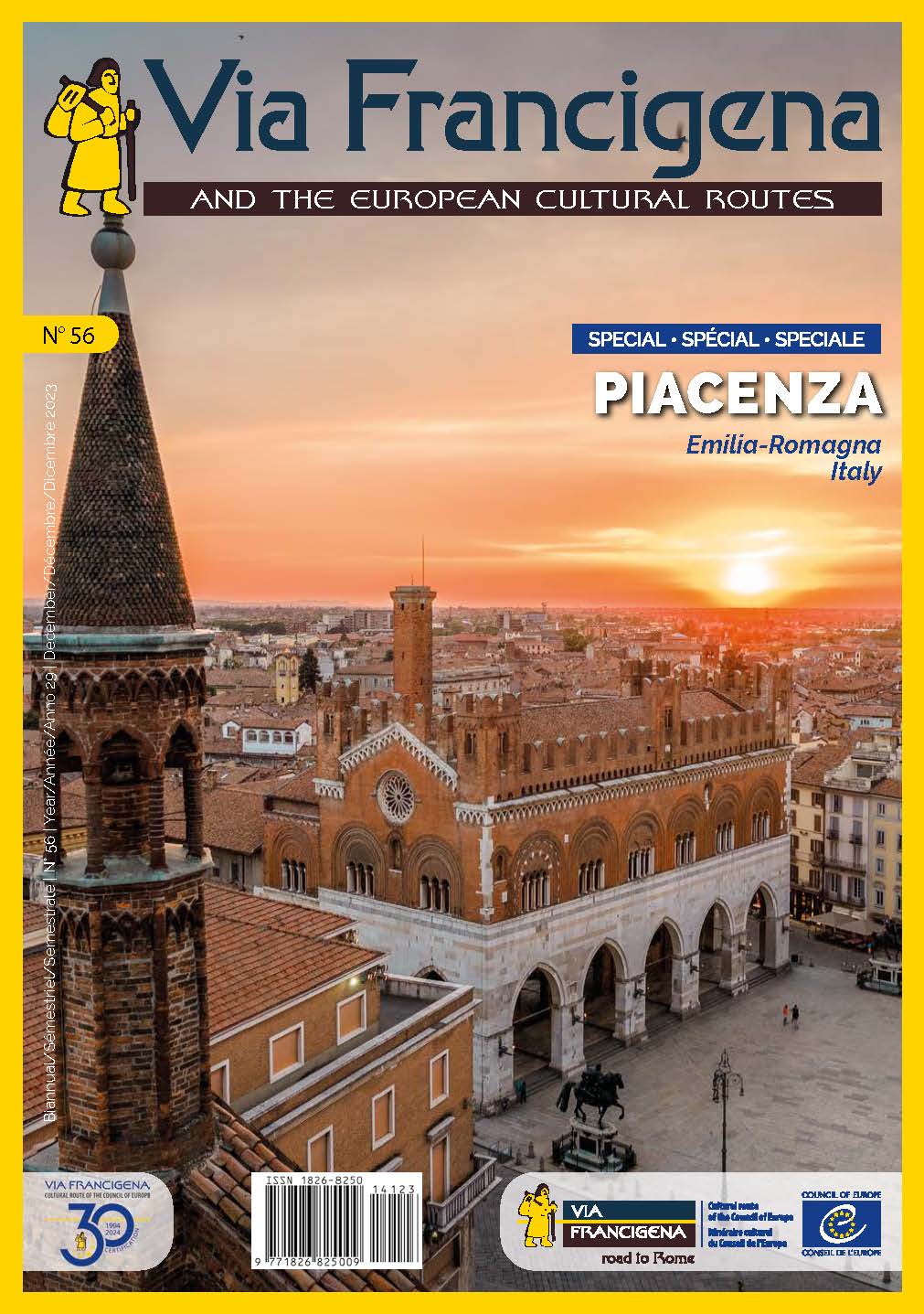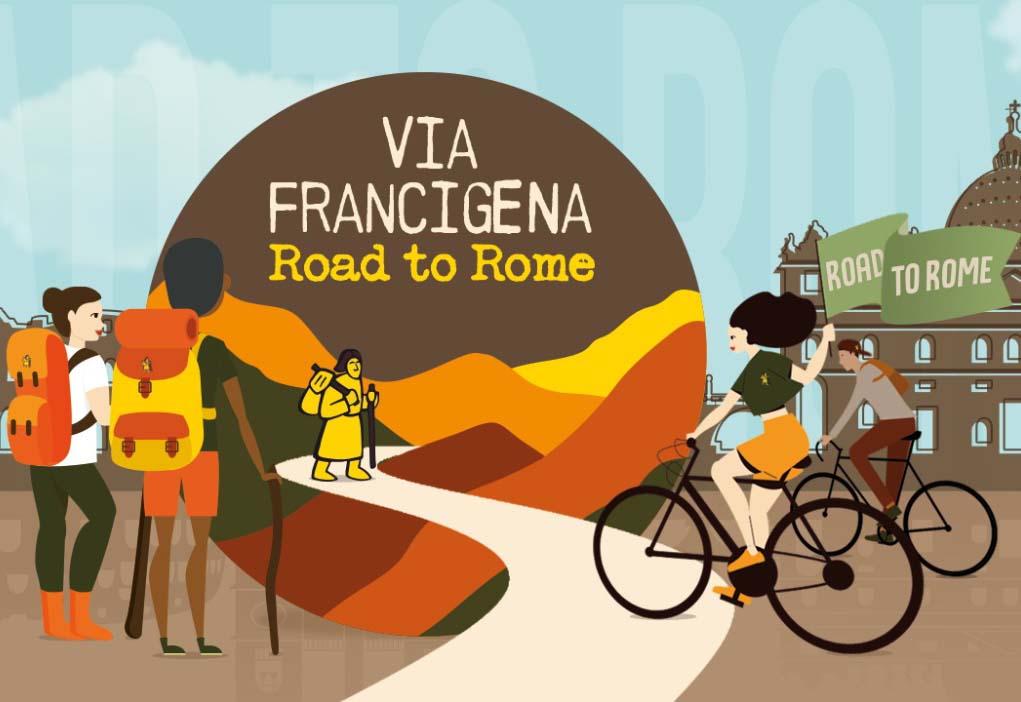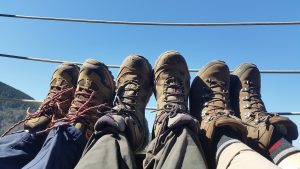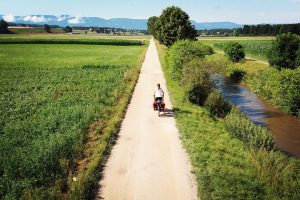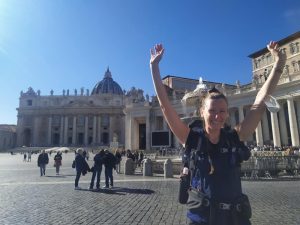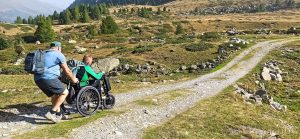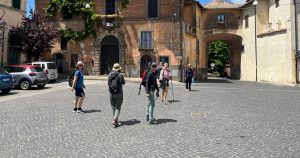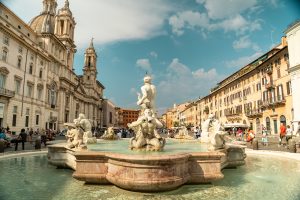Apulia, a region rich in ancient sheep-tracks and blessed with a mild climate, offers an ideal destination for year-round travel planning. Whether leisurely explored on foot or by bicycle, one can trace the footsteps of ancient pilgrims en route to the embarkation ports for the Holy Land: Brindisi, Otranto, Bari, and Santa Maria di Leuca.
The Via Francigena in Salento extends along the heel of Italy’s boot for approximately 120 km, offering a cultural journey through this region renowned for its numerous must-visit destinations. From major cities like Lecce to Otranto, the millennia-old city facing the East, the route traverses villages and countryside adorned with olive trees and dry-stone walls.
Let’s discover together the primary highlights along the route, as well as the accommodations available along the way for rest and refreshments.
TABLE OF CONTENTS
- The itineraries
- The stages
- When to walk the Via Francigena in Salento
- Highlights not to miss along the Via Francigena in Salento
- Where to sleep and what to eat
- Guidebook of the Via Francigena in Southern Italy
1. The itineraries
The Salento region is intersected entirely by the Via Francigena, which branches off into several routes accessible by both foot and bicycle. The primary route connects Rome to Santa Maria di Leuca, entering Apulia at stage no. 21, linking Buonalbergo to Celle di San Vito. Another route, the Monte Sant’Angelo route, connects Troia to Monte Sant’Angelo before merging with the Litoranea, the third viable route, which connects Monte Sant’Angelo to Bari before rejoining the main route to Santa Maria di Leuca. Pilgrims can also decide to embark along the Via Bradanica, a route variant leading from Ordona to Matera. Along these routes, paths intersect or retrace ancient routes like the Via Traiana Calabra (from Benevento to Brindisi), the Via Leucadense (from Lecce to Santa Maria di Leuca), and the Via Micaelica (from Rome to Monte Sant’Angelo). The traversed territory boasts rich historical evidence spanning different eras, from the Roman abbey of Santa Maria di Cerrate to dolmens and menhirs (abundant in Giurdignano), as well as crypts, rock churches, and oil mills. While crossing this region, one can admire inland towns and villages, showcasing the distinctive architectural style of Lecce Baroque. Furthermore, the sea serves as a constant theme throughout the entire route, encountered frequently in almost every stage.
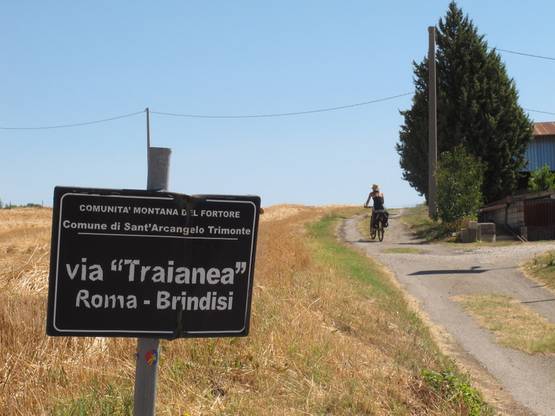
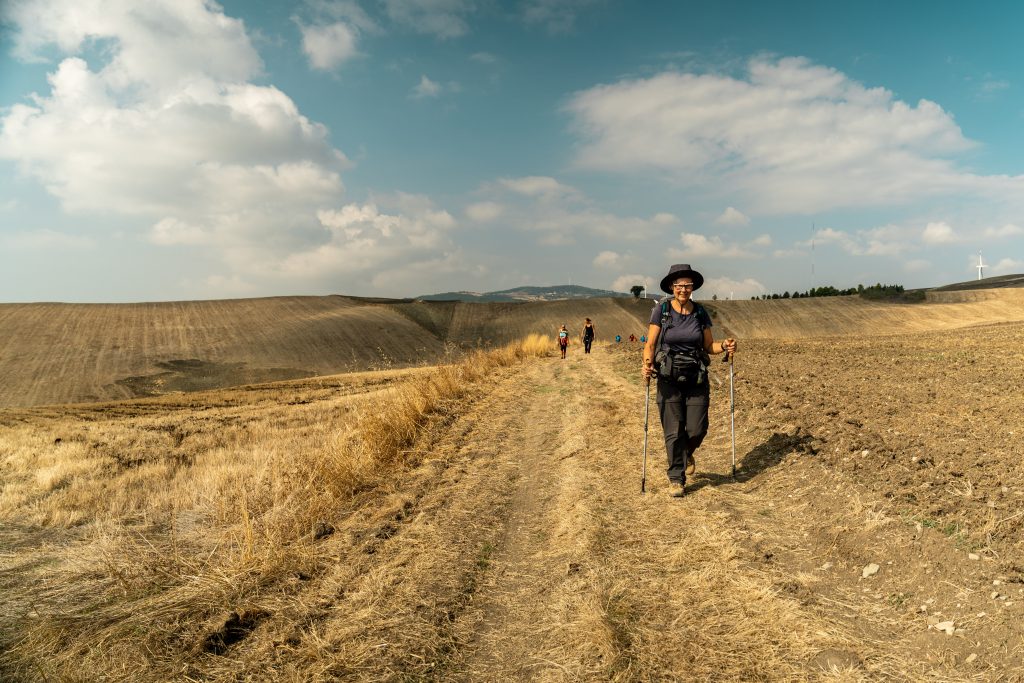
2. The stages
Below, you’ll find the comprehensive list of stages comprising the Via Francigena in Puglia, totaling 544.6 km. The complete itinerary, along with all technical details, can be accessed in the “The Itinerary” section. Additionally, you can download the route maps using the discount code provided by our partner, AllTrails.
STAGES OF THE main itinerary in puglia until Santa Maria di Leuca
21 Buonalbergo – Celle di San Vito 29,0 km
22 Celle di San Vito – Troia 17,1 km
23 Troia – Castelluccio dei Sauri 23,7 km
24 Castelluccio dei Sauri – Ordona 19,9 km
25 Ordona – Stornara 20,3 km
26 Stornara – Cerignola 17,9 km
27 Cerignola – Canosa di Puglia 19,2 km
28 Canosa di Puglia – Andria 24,1 km
29 Andria – Corato 13,9 km
30 Corato – Ruvo di Puglia 12,2 km
31 Ruvo di Puglia – Bitonto 18,4 km
32 Bitonto – Bari 21,6 km
33 Bari – Mola di Bari 23,5 km
34 Mola di Bari – Monopoli 29,1 km
35 Monopoli – Savelletri 21,4 km
36 Savelletri – Torre Canne 8,9 km
37 Torre Canne – Torre Santa Sabina 30,0 km
38 Torre Santa Sabina – Brindisi 31 km
39 Brindisi – Torchiarolo 25,2 km
40 Torchiarolo – Lecce 22,5 km
41 Lecce – Martano 30,9 km
42 Martano – Otranto 30,5 km
43 Otranto – Vignacastrisi 23,8 km
44 Vignacastrisi – Tricase 14,3 km
45 Tricase – Santa Maria di Leuca 18,0 km
STAGes of the itinerary to Monte Sant’Angelo (109 km)
MSA01 Troia – Lucera 22,2 km
MSA02 Lucera – San Severo 23,2 km
MSA03 San Severo – Stignano 22,5 km
MSA04 Stignano – San Giovanni Rotondo 19,3 km
MSA05 San Giovanni Rotondo – Monte Sant’Angelo 21,8 km
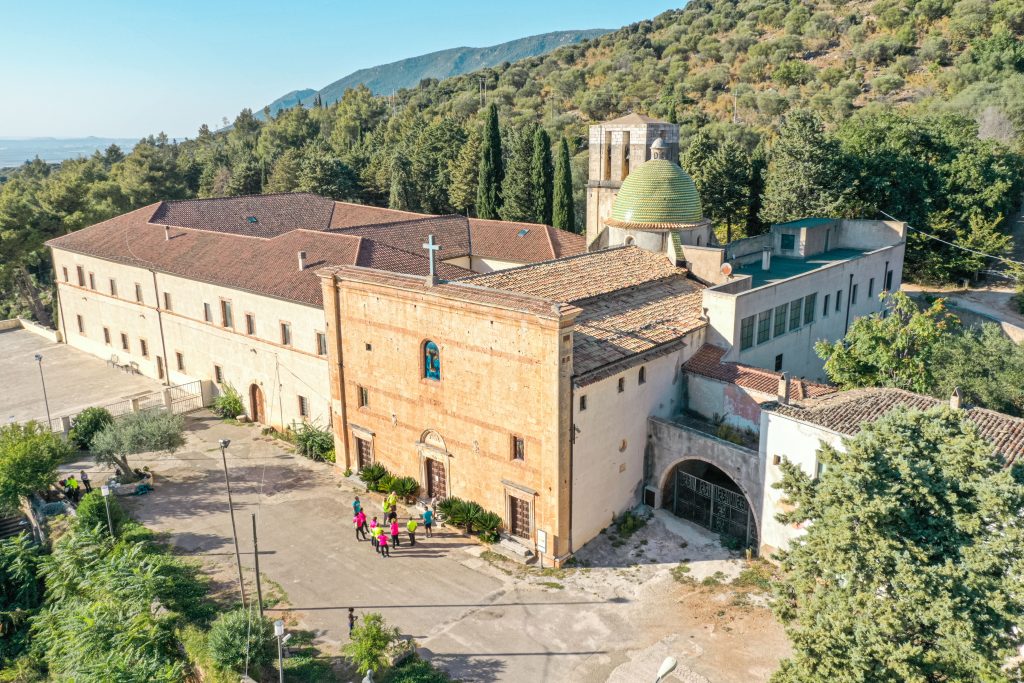
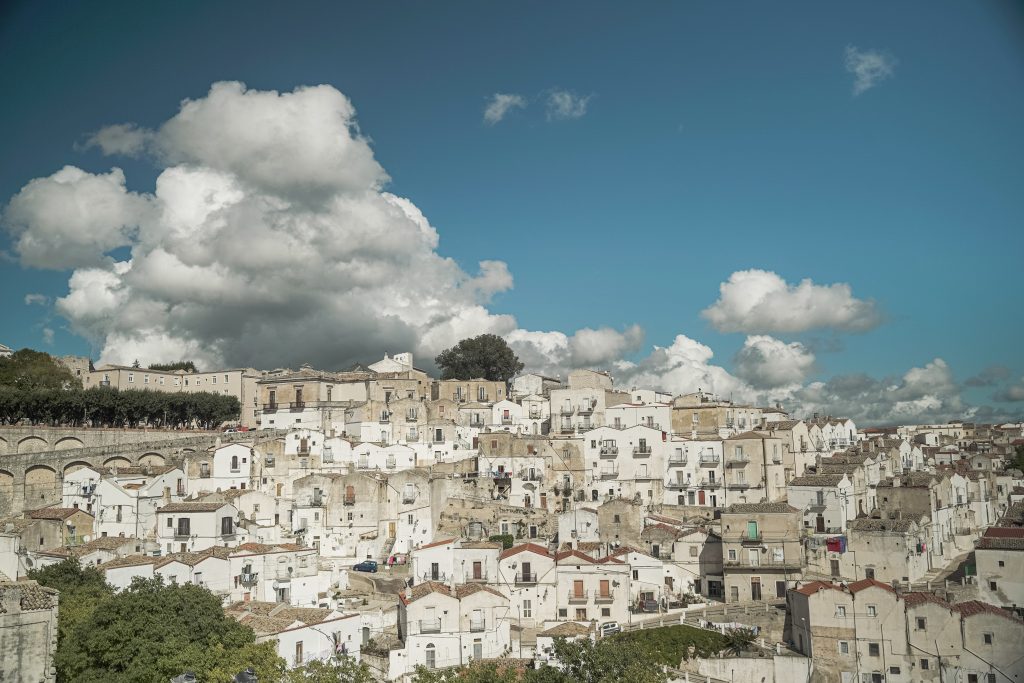
stages of the Via Litoranea (143,8 km)
LIT01 Monte Sant’Angelo – Manfredonia 13,9 km
LIT02 Manfredonia – Zapponeta 27,4 km
LIT03 Zapponeta – Margherita di Savoia 19,0 km
LIT04 Margherita di Savoia – Barletta 16,4 km
LIT05 Barletta – Trani 14,3 km
LIT06 Trani – Bisceglie 10,9 km
LIT07 Bisceglie – Molfetta 12,0 km
LIT08 Molfetta – Giovinazzo 8,1 km
LIT09 Giovinazzo – Bari 21,7 km
stages of the Via BRADANICA (218,8 km)
BRA01 Ordona – Ascoli Satriano 19,3 km
BRA02 Ascoli Satriano – Candela 19,1 km
BRA03 Candela – Melfi 27,6 km
BRA04 Melfi – Rionero in Vulture 11,2 km
BRA05 Rionero in Vulture – Forenza 25,1 km
BRA06 Forenza – Acerenza 16,7 km
BRA07 Acerenza – Lucania 20,5 km
BRA08 Lucania – Irsina 31,0 km
BRA09 Irsina – Madonna di Picciano 30,9 km
BRA10 Madonna di Picciano – Matera 17,7 km
3. When to walk the Via Francigena in Salento
The Via Francigena in Salento offers year-round travel opportunities, courtesy of the region’s temperate climate. Winters are mild, with significant rainfall primarily occurring in the initial months of the year. The Apennines and the Gargano mountain area experience colder temperatures during winter, with potential snowfall at higher elevations. Conversely, summers can be characterized by very high temperatures, particularly in July and August, making it advisable to prepare for the heat accordingly.
➡️ Click here for advice on walking the Via Francigena during the hottest months of the year
4. Highlights not to miss along the Via Francigena in Salento
The Salento territory is a diverse land, steeped in history, stunning landscapes, and rich traditions; it is impossible not to stray from the path to explore this region.
We enter the authentic territory of Salento with stage no. 37 from Torre Canne to Torre Sabina, but it is with the next stage (no. 38) that we arrive in the first Salento city crossed by the Via Francigena: Brindisi. Here, you will find the Roman Columns, symbols of the city and believed to be the markers of the Via Appia, along with the Regina Margherita promenade. On the subsequent stage, just before reaching Torchiarolo, you will encounter the archaeological site of the ancient city of Valesio, which is definitely worth a visit. Continuing along your route, you will reach Lecce, the most significant historical center of Salento. In the heart of Lecce’s Baroque architecture, it’s impossible not to be captivated by the facades of the buildings that epitomize this style. Of particular interest is the Monastero degli Olivetani, a former 12th-century convent featuring two adjacent cloisters, a well with Solomonic columns, and a central dome.
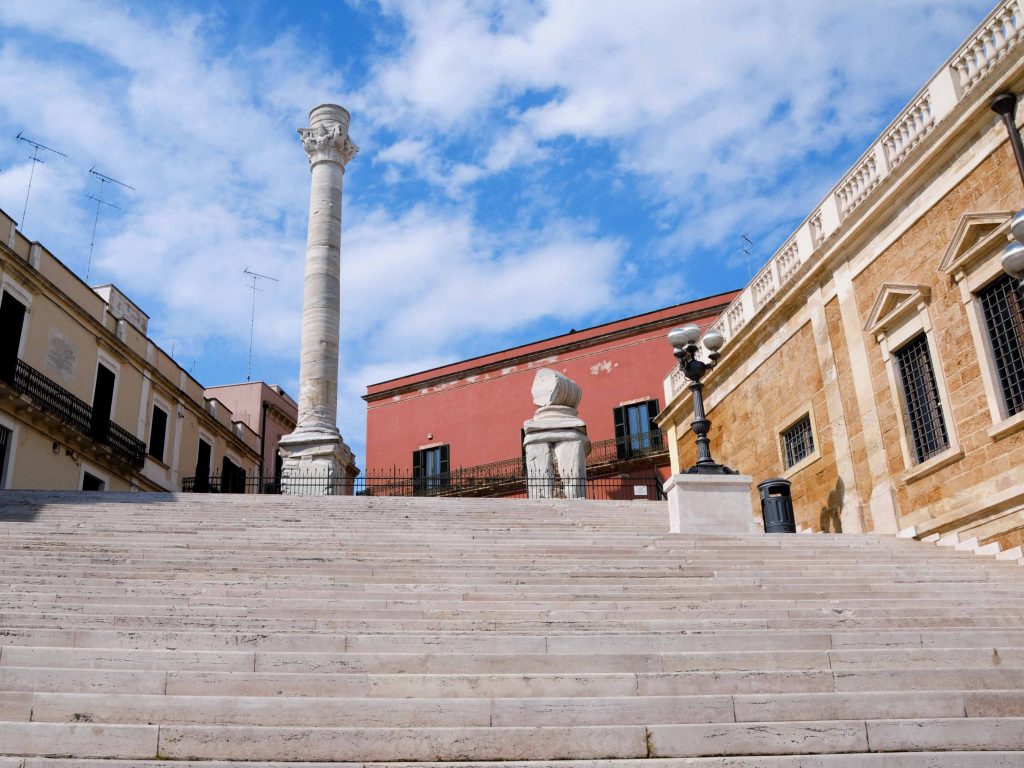
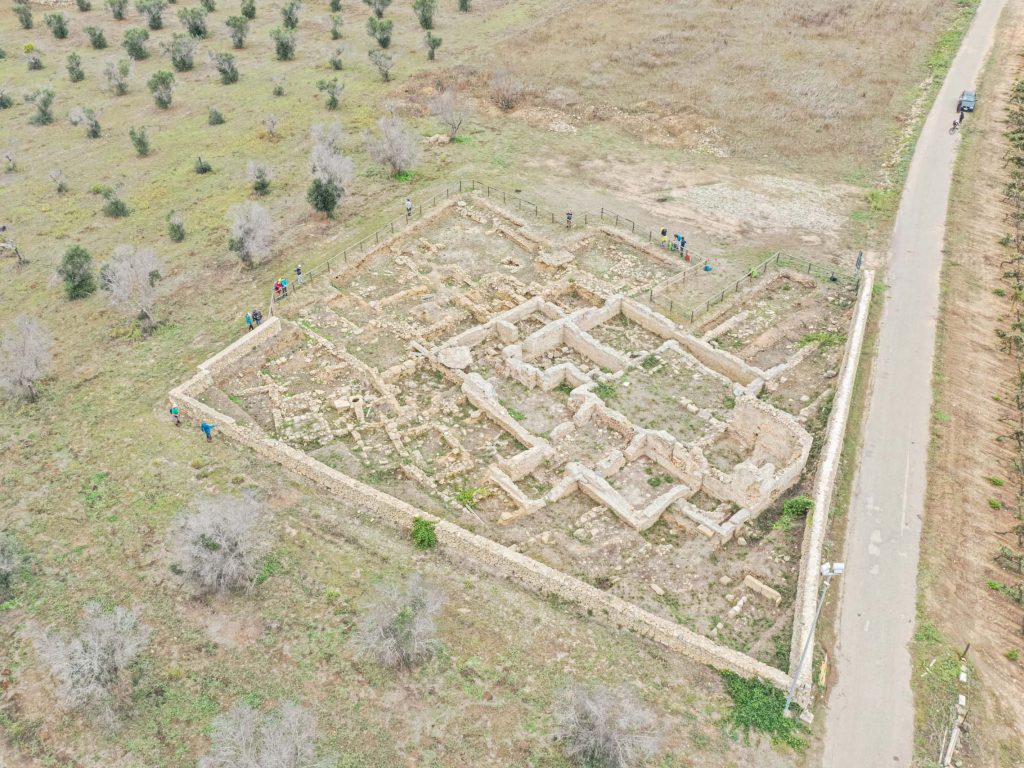
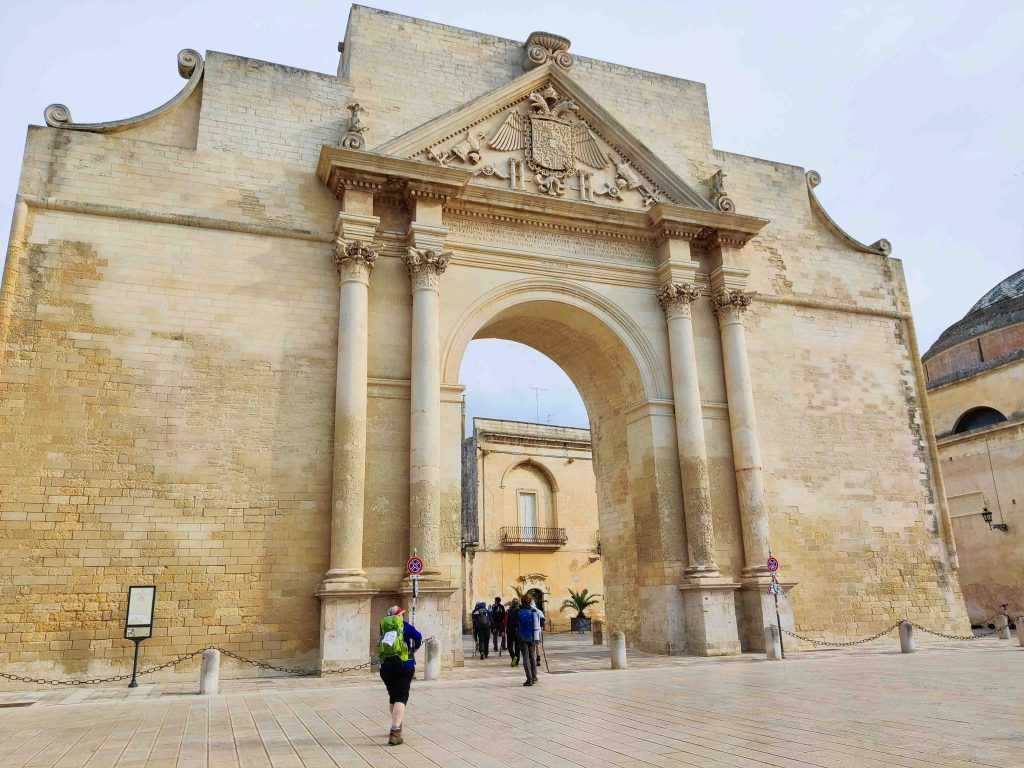
Continuing onwards, we arrive at another significant hub of Salento: Otranto. Situated at the easternmost point of Italy, Otranto witnesses the dawn of each new day before all other Italian cities. Enclosed within defensive walls, Otranto features a maze of alleys and streets lined with white houses. Greek, Byzantine, and Aragonese influences are evident in the town’s architecture. Notable landmarks include the Aragonese Castle, the Byzantine Church of San Pietro, and the medieval Castle of Corigliano d’Otranto. During the summer months, a dip in the Baia dei Turchi, one of Salento’s most renowned beaches located just a few kilometers from the town center, is a must. Further along the route, as you approach Tricase, you’ll encounter other natural attractions perfect for cooling off, such as the natural pool of Marina di Serra and the Acquaviva inlet. Finally, the last town in Salento is Santa Maria di Leuca, also marking the final stop along the entire Via Francigena. Here, you cannot overlook the Basilica of Santa Maria de Finibus Terrae, perched atop Punta Melisio, offering a splendid vantage point for capturing breathtaking views of the bay and port below. Another major draw is the Lighthouse, one of Europe’s tallest, which can be visited on appointment and offers panoramic vistas encompassing the Greek coast and the Acrocerauni Mountains along the Albanian border.
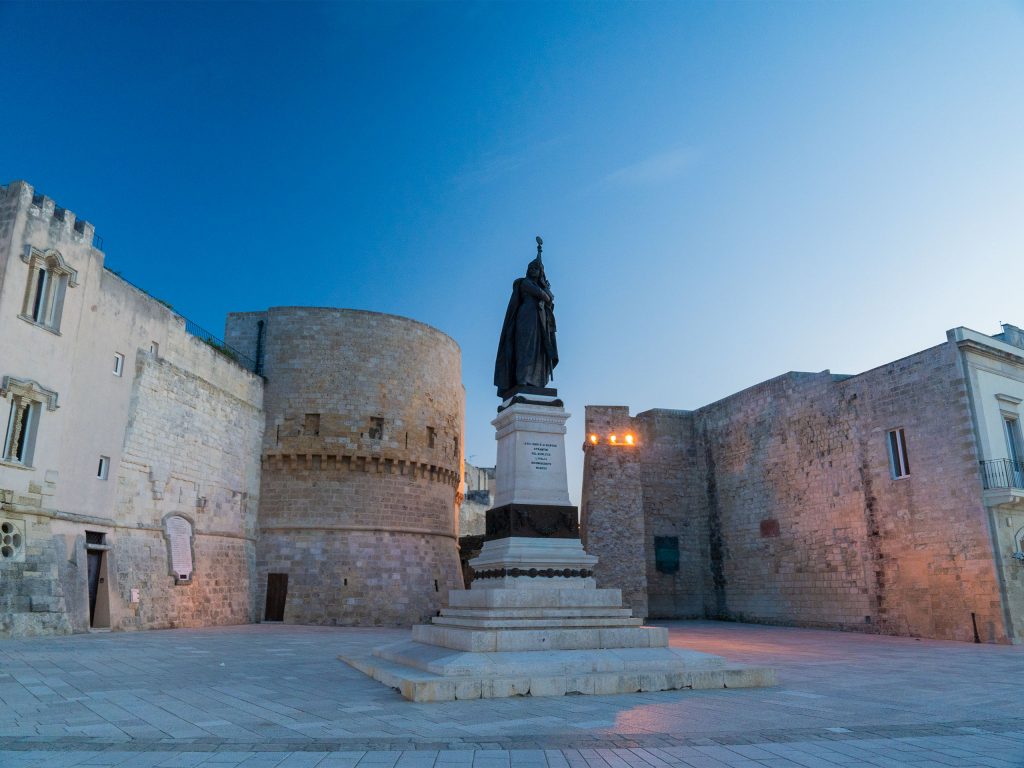
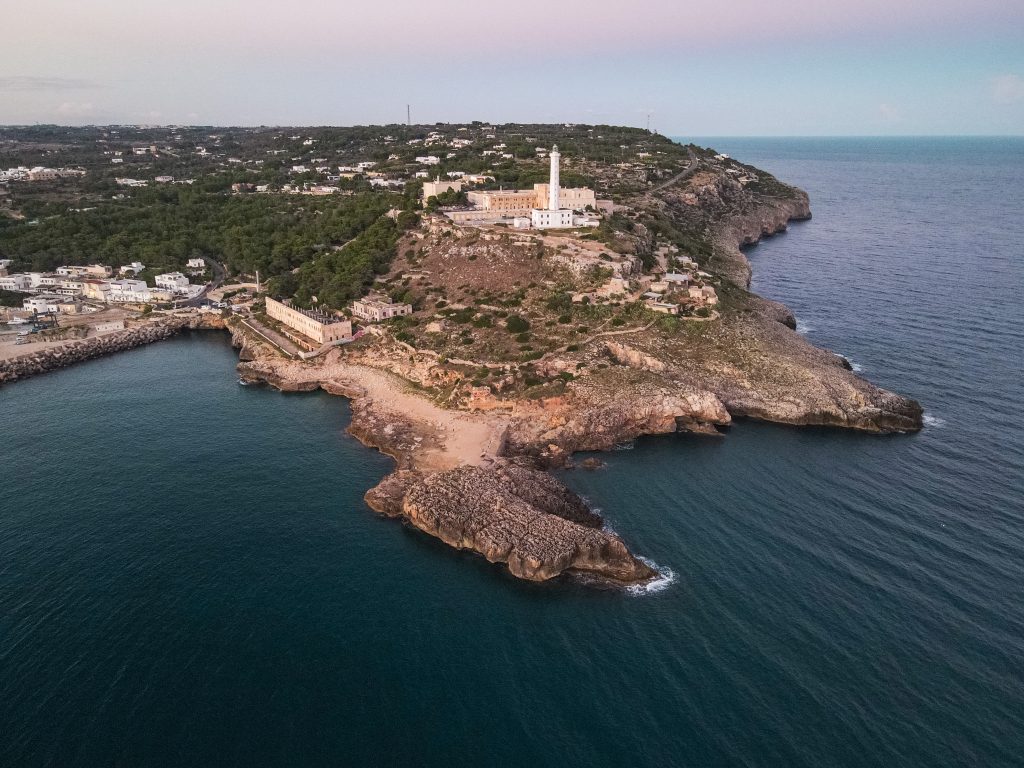
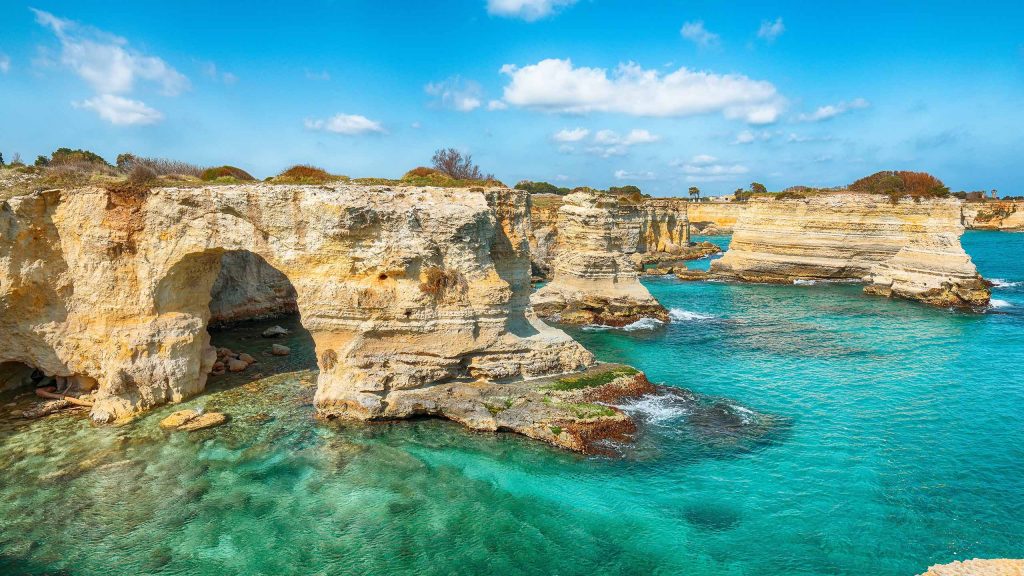
5. Where to sleep and what to eat
A walking or cycling journey through Salento offers an immersion in the flavors of bygone days and the hospitality of its inhabitants. Along the route, various accommodation options such as hostels, bed and breakfasts, and campsites are available for overnight stays, as detailed in the dedicated section of our website. “The warmth of hospitality often defines a journey, thanks to the encounters one has along the way. People, faces, and passion,” remarks Luca Bruschi, Director of our Association. “The first network of POP hostels, which stands for Pubblici Ostelli di Puglia (Public Hostels of Puglia), originated in Puglia.” The culinary delights abound: superb local wines complement homemade pasta made with chickpeas, flavorful wild vegetables, and delectable desserts.” Following his recent journey along the Francigena in the Salento region, Luca Bruschi emphasizes, “Once again, good food proves to be a significant aspect of exploring this region, with its vibrant colors, aromas, and flavors: from grilled squid to orecchiette, from pancotto to octopus, from olives to rustico leccese and pasticciotti. Not to be overlooked are the wines: Negramaro, Primitivo, and the Salento whites, to be relished at the end of each stage.“
6. Guidebook of the Via Francigena in Southern Italy
“The Via Francigena in Southern Italy: 930 km on foot between Lazio, Campania, Basilicata, and Puglia” is the guide published by Terre di Mezzo under the patronage of the EAVF, available for purchase online in both Italian and English versions. It provides detailed maps, elevation profiles, water refill points, terrain descriptions (such as dirt or asphalt paths), accommodation options, and sightseeing recommendations for each stage. While primarily dedicated to walking, it’s noted that much of the route described can also be travelled by bicycle.
➡️ Click here to purchase the guide in English
➡️ Click here to purchase the guide in Italian
